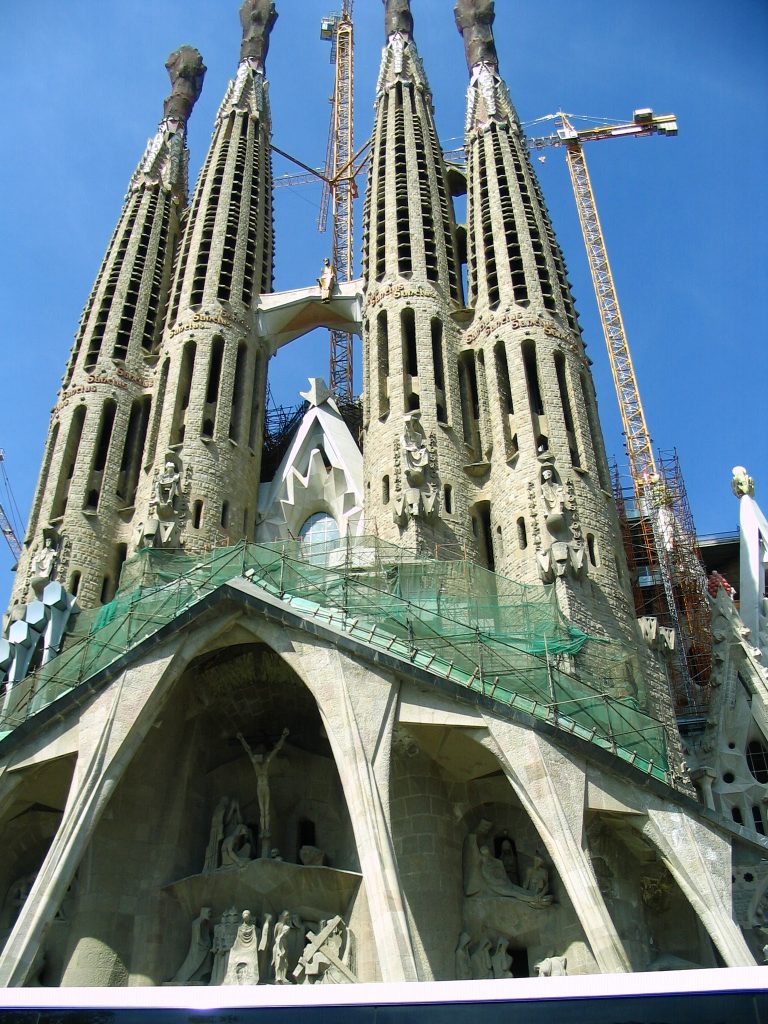Barcelona may be compared to an old tree whose trunk has thickened over the course of two thousand years, and the core of this trunk is the Gothic quarter, situated to the right of the Rambla looking towards the Placa de Catalunya, from the sea. The streets are narrow, and the buildings, whose facades show the ravages of time and the dampness of the climate, are bathed in golden sunlight that only reaches down to the pavements for a short time each day.
The old part of the city, although so evidently of another era, is a thriving area and maintains its importance on many levels. It is here that both spiritual and temporal mailers have their seats in the cathedral and Palau Reial, respectively. Also, the Palau de la Generalitat ( headquarters of the Catalan autonomous government ), The Ajuntament ( Townhall ), the churches of Santa Maria del Mar and del Pi, and the restored palaces on Carrer Montcada, all lie within its precincts.
A visit to the die Gothic quarter may start at the Placa Nova, a pedestrian zone in front of the cathedral where street markets are sometimes held. Building work on Barcelona’s Gothic cathedral was started, as such, at the end of the thirteenth century and continued intermittently during the following six hundred years until the end of the nineteenth century when the facade was finally completed. The temple has three groined or ribbed vaults and is flanked by two elegant octagonal towers. Magnolia, medlar, palm, and orange trees grow in the adjoining cloister, and these elements, along with the chapels, the murmur of the fountain, and the flagstones, green with age, combine to create a magical, almost unreal atmosphere.
On leaving the cloister, the Placa Felip Neri is another haven of peace worth visiting, and, from here, we return, around the apse of the cathedral, towards the Placa del Rei.
The Palau Reial Major, which presides the square, is steeped in history. It was within the Salo del Tinell that, allegedly, Columbus was received by the king and queen both before and after his voyage of discovery. The building itself, the heart of Catalan power in the splendid medieval period, has been alternately converted, mutilated, and restored since the final days of the Roman Empire. The facade of the palace ( formed by different sequences of arches that add the finishing touches to the Rei Marti tower ), and the Renaissance staircase, are particularly impressive.
The palace is flanked, to the left by the Palau del Lloctinent and, to the right, by the chapel of Santa Agueda. On the far side of the square, next to a modern sculpture by Eduardo Chillida whose form harmonizes perfectly with the medieval architecture, lies the Museu d’Historia de la Ciutat. From the museum, an underground passageway leads through the ruins of the Roman city beneath the aforementioned buildings and the Museu Mares.
The nearby street named Carter d’Argenteria – once the home of silversmiths and makers of steel weapons as its name suggests, – used to be called Carrer del Mar. At the far end, and almost on the seafront, lies the Placa de Santa Maria del Mar with its markedly medieval environment dominated by the church of the same name. Built by Berenguer de Montagut during the first half of the fourteenth century, Santa Maria is a paradigm of Catalan Gothic architecture. The interior, distributed in three very tall naves, exudes a sensation of majesty and elegance, due both to the svelteness of the columns and the great distance between them.
Behind Santa Maria del Mar, close to the old market on the Passeig del Born, lies Carrer Montcada where Barcelona’s nobility built their palaces in the fourteenth and fifteenth centuries. This street is a succession of opulent mansions, illuminated obliquely by the sun’s rays and with ample porches to allow the passage of horse-drawn carriages. Behind these grand entrances, there is usually a spacious patio and staircase leading to the first floor of the residence. These palaces have been converted into art galleries and museums in recent times and, among them, of particular importance is the Museu Picasso which today occupies five adjoining palaces. Its permanent collection of the artist’s work ( with special emphasis on his earlier years ) has made this one of the most visited tourist attractions in the city.
Just opposite lies the Museu de la Indumentaria ( Costume Museum ), and the seat of the Barbier Mueller collection, with its Pre-Columbian treasures. Via the neighboring Carrer Princesa and Carrer Ferran, one arrives at the Placa de Sant Jaume. In this square, reminiscent of an Italian piazza, the two important political powers that govern Barcelona are to be found. They face one another symbolically from the two extremes. On one side the Generalitat ( or Catalan autonomous government ) and, on the other, the Ajuntament ( or City Hall ).
The Palau de la Generalitat building dates, in its earliest construction, from the beginning of the fifteenth century. The most outstanding elements, the patio, and principal staircase, the facade overlooking Carrer del Bisbe Irurita, or the Pati dels Tarongers, follow the Gothic style. The main facade over the Placa de Sant Jaume is Renaissance.
The Townhall is also a fruit of numerous transformations. Its most characteristic element is, probably, the Salo de Cent where the representatives of the city would meet towards the end of the fourteenth century and which the municipal authorities still use today for meetings of special relevance. The Placa de Sant Jaume, flanked by the seats of these two institutions, is the scene of many kinds of demonstrations and gatherings: from fervent manifestations of patriotism to the celebration of sporting victories by local teams, organized dancing of “sardanes” – the typical Catalan folk dance – and the building of castles, or human towers.
